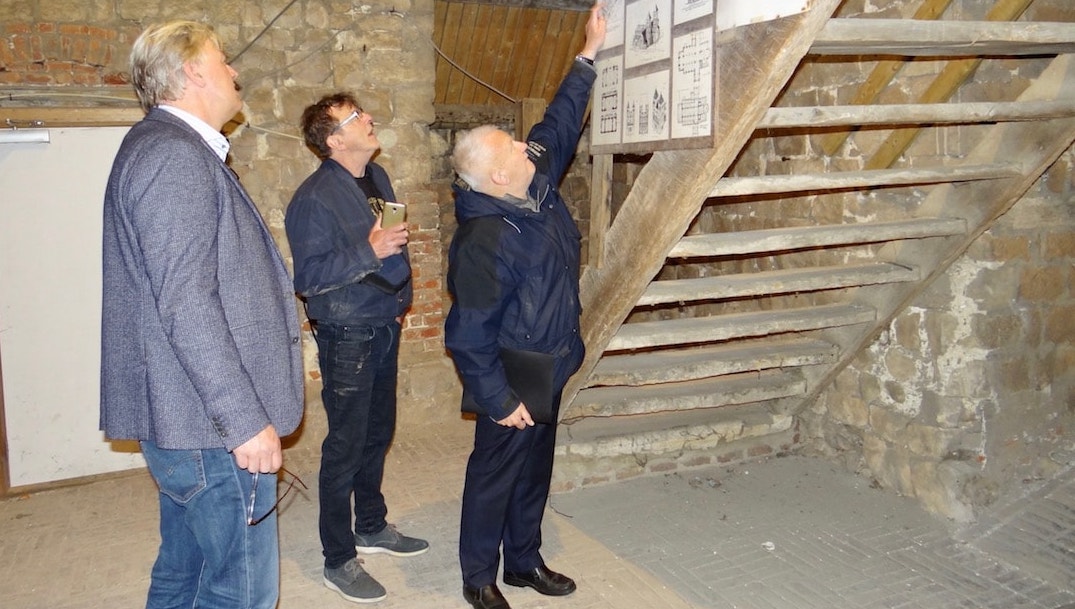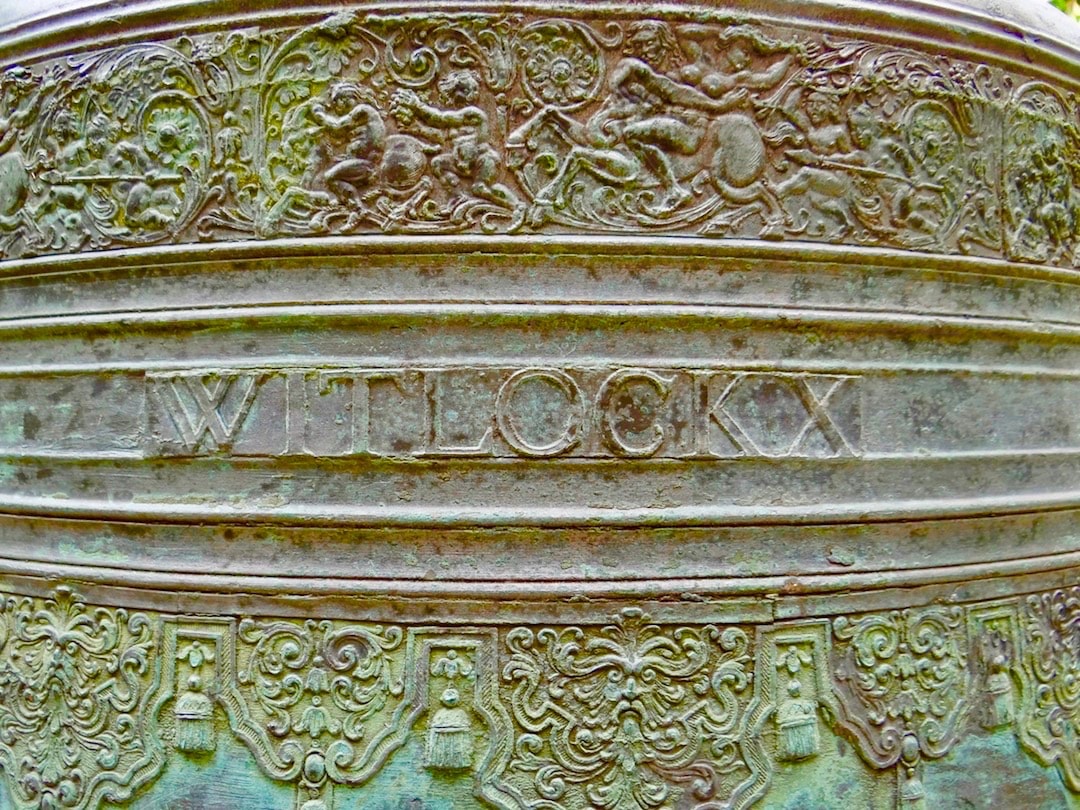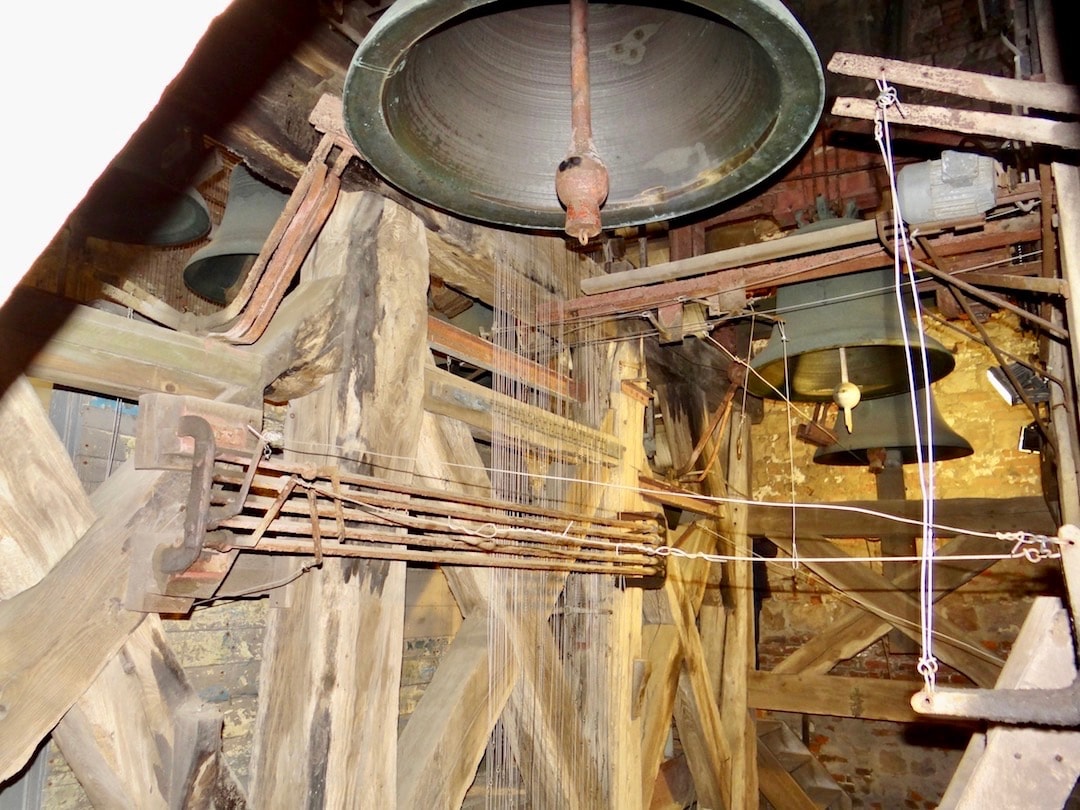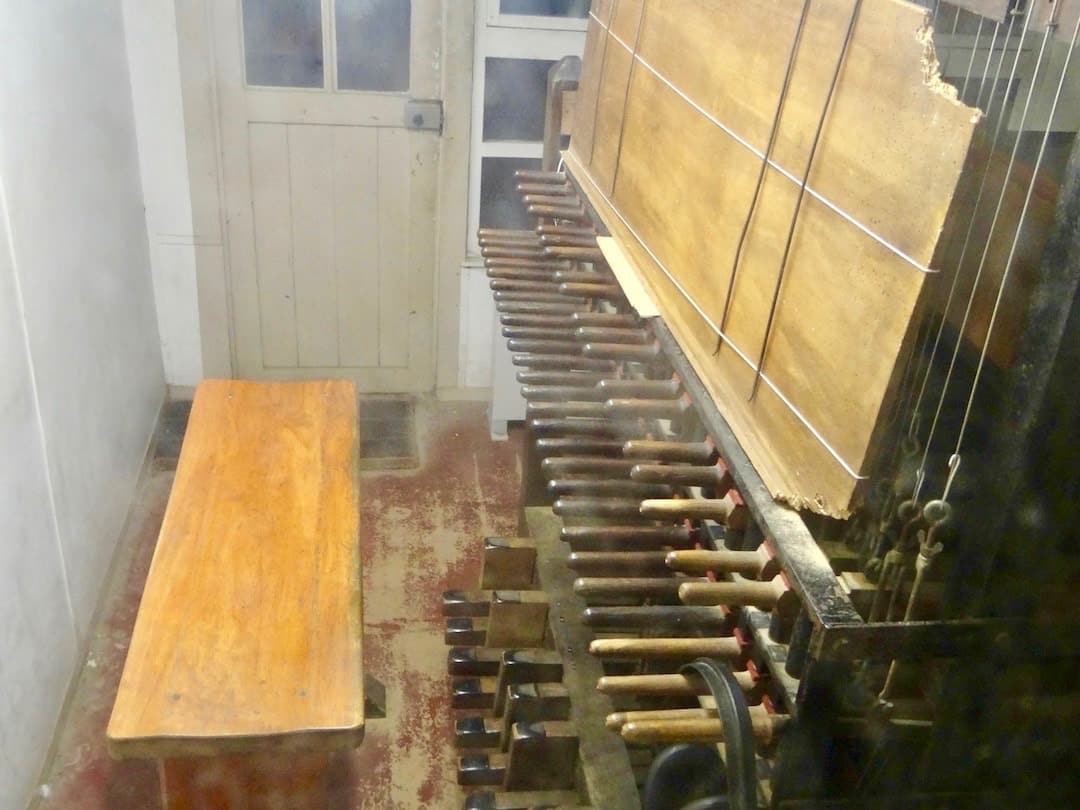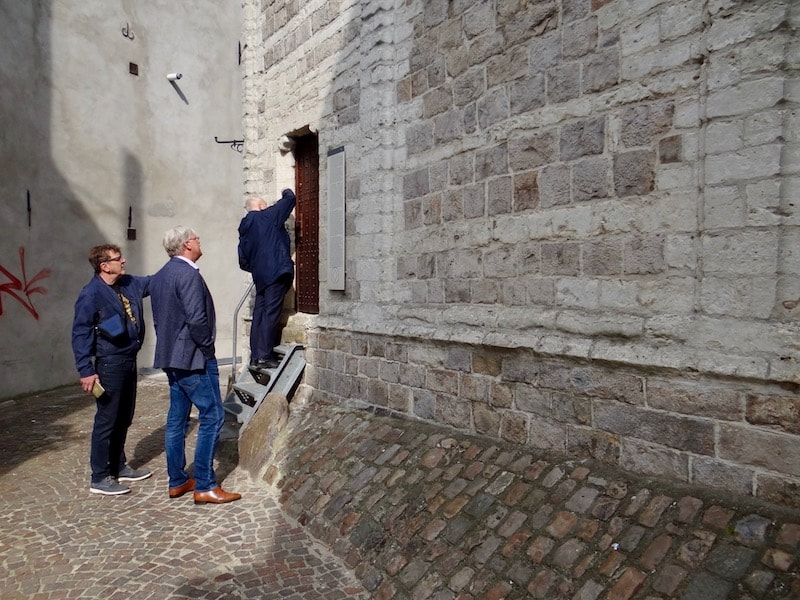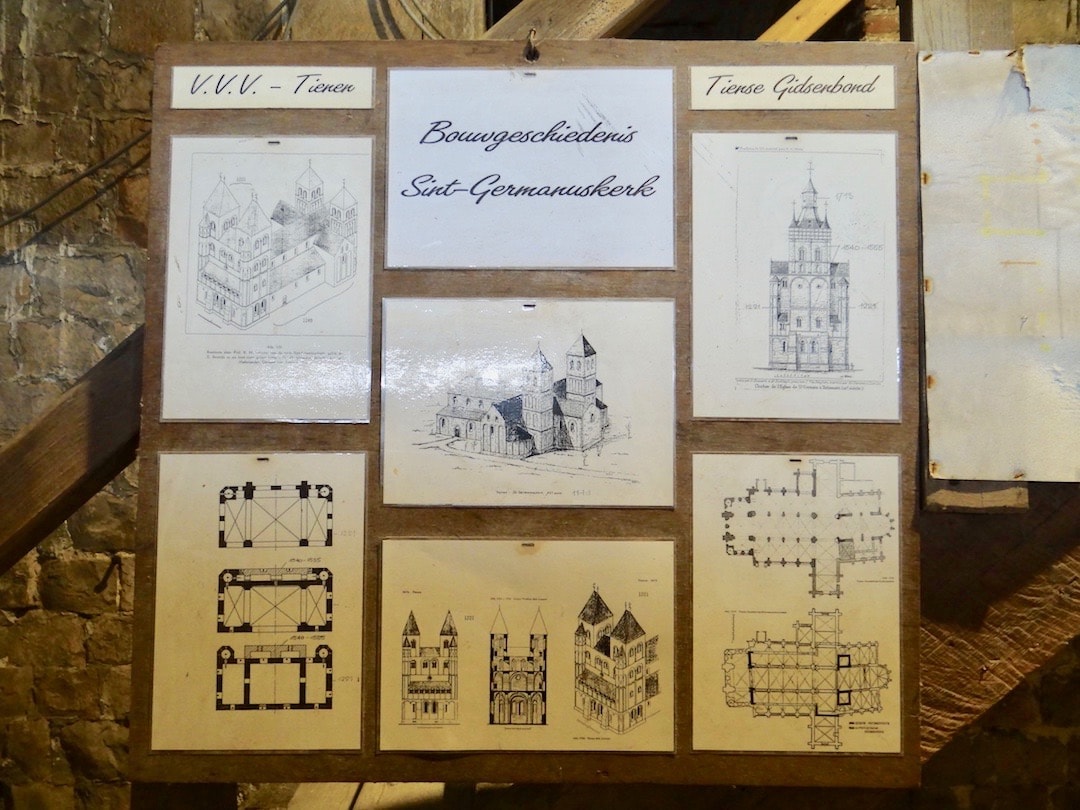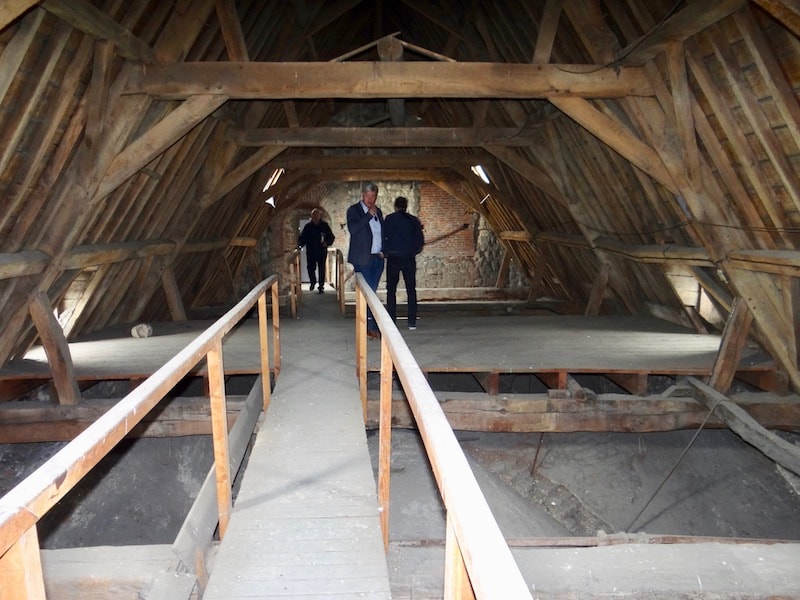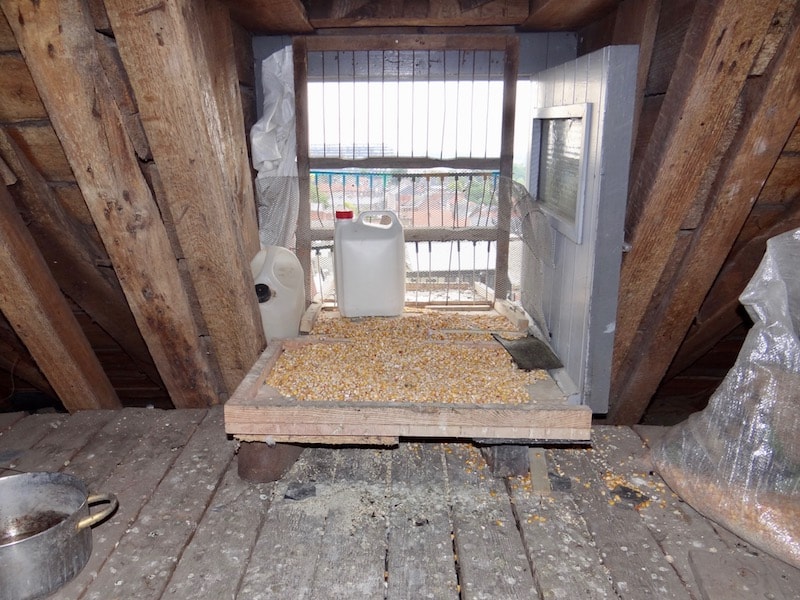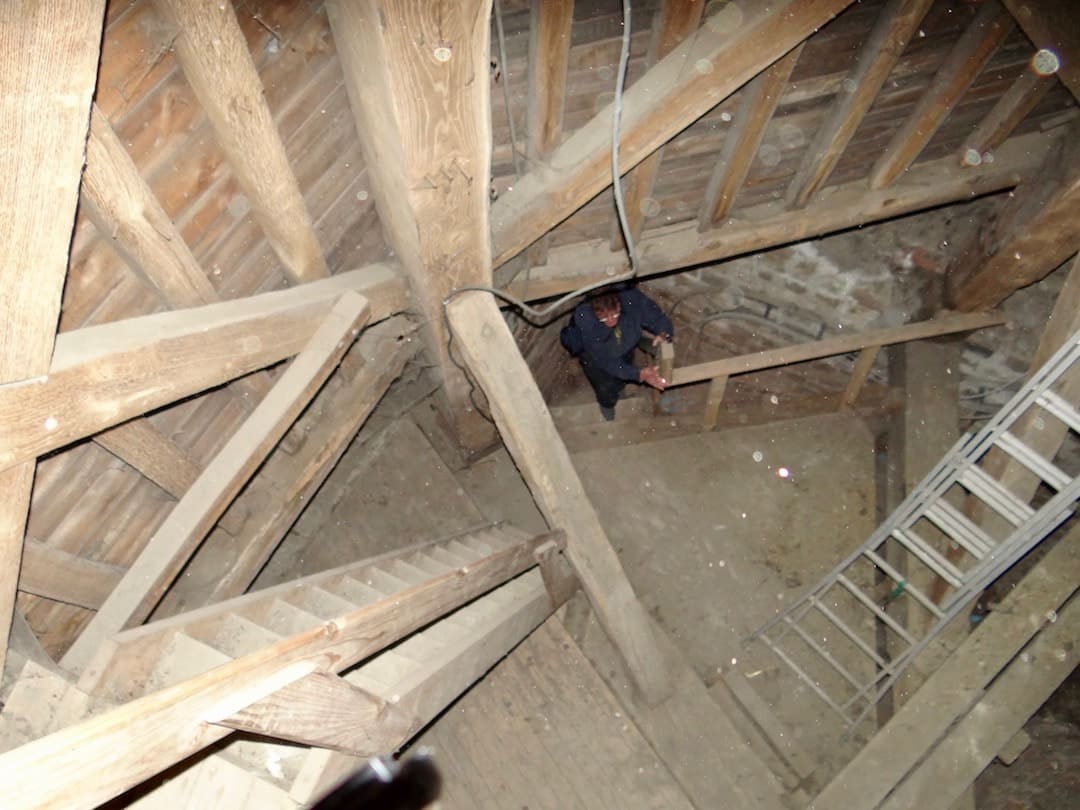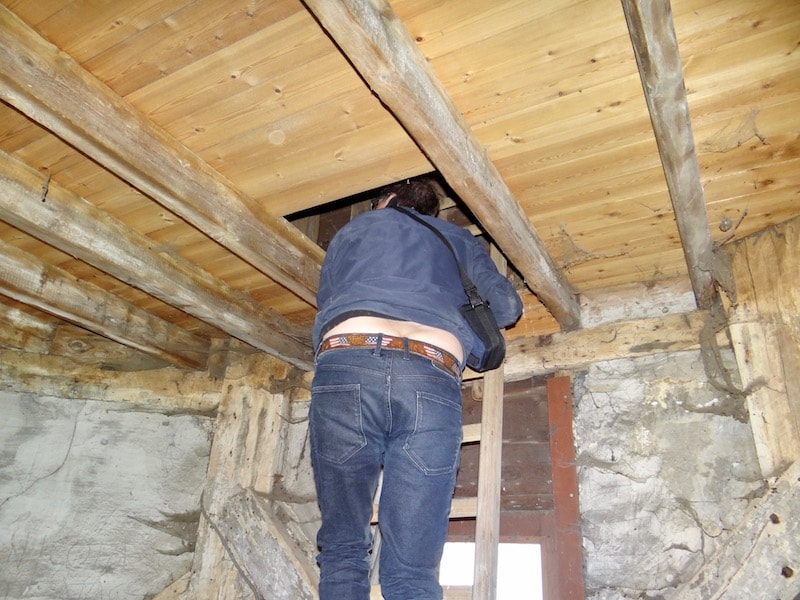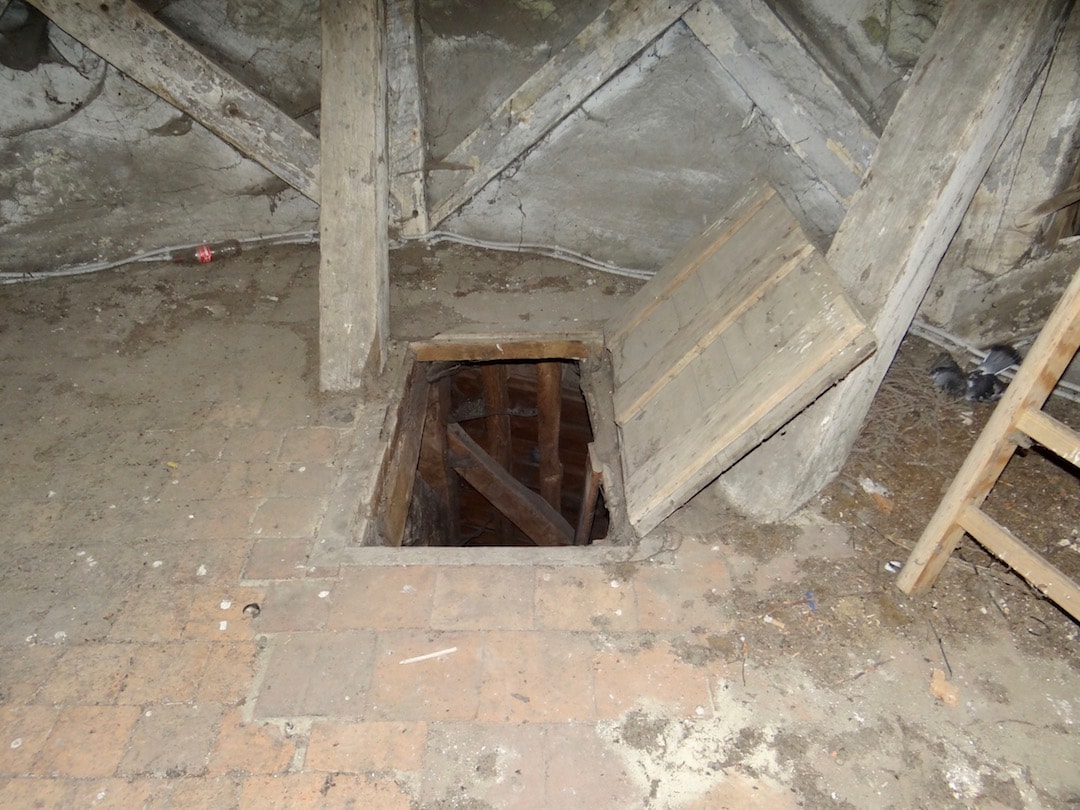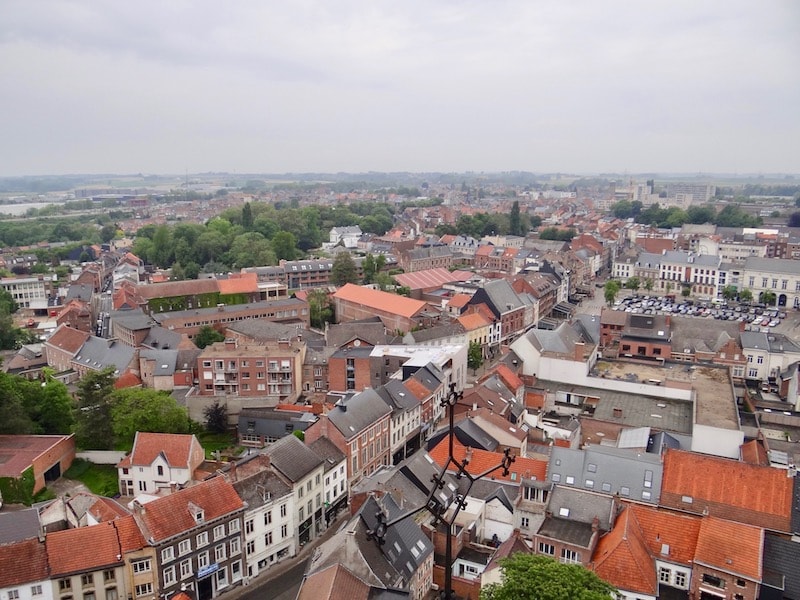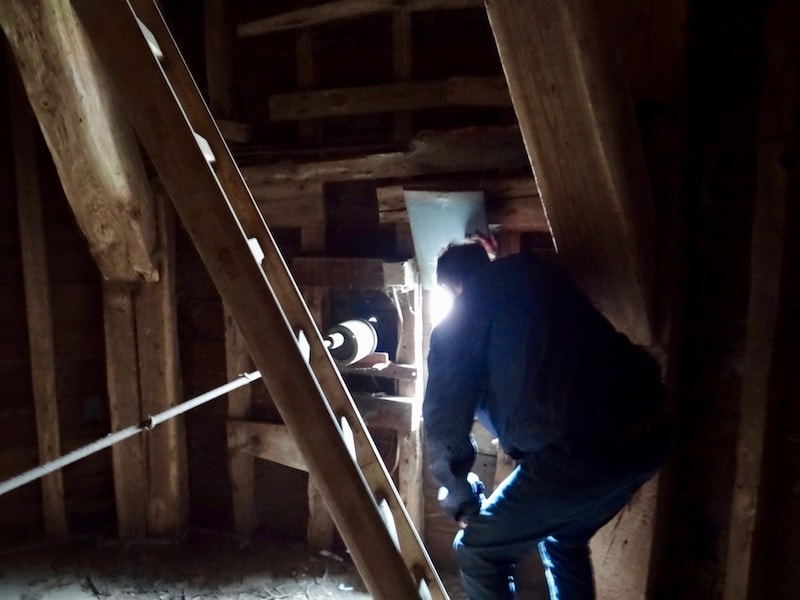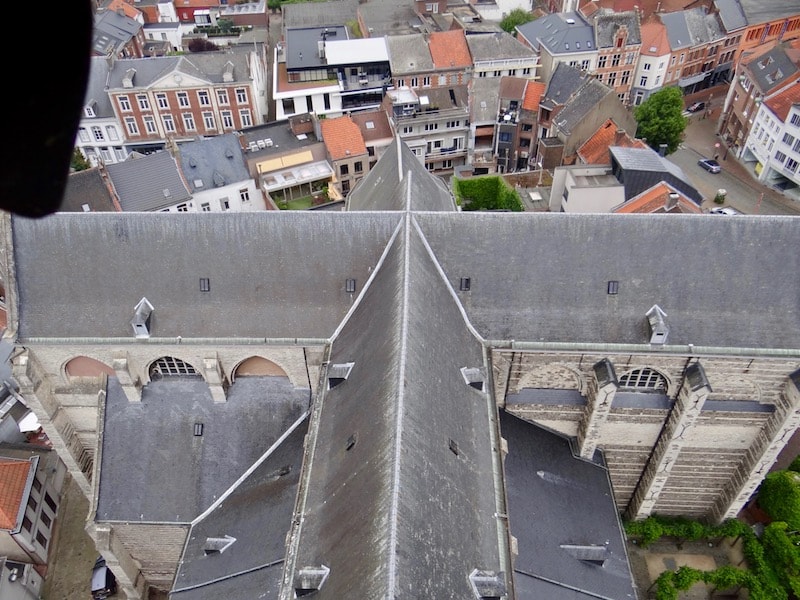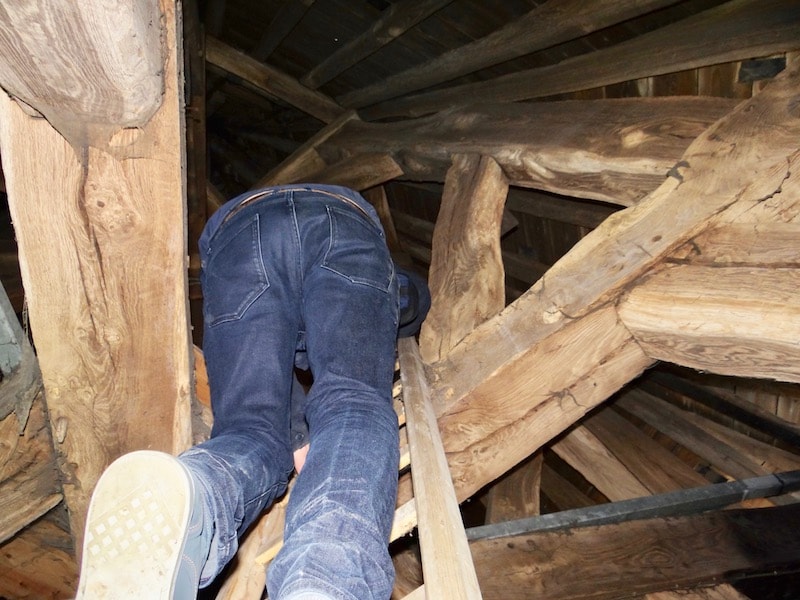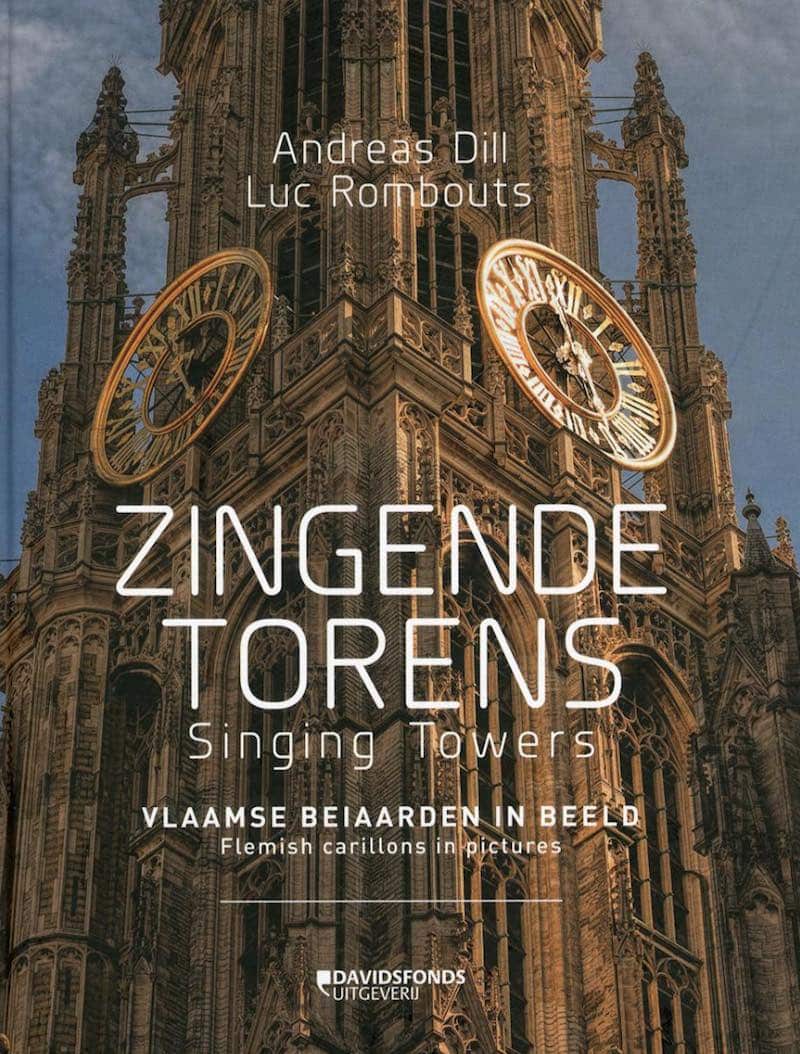A warm welcome in Tienen
Luc Lambrecht of the Tienen Tourism Department made us feel very welcome from the first email contact. For a moment, it seems that city carillonneur Luc Rombouts will receive us personally. This is music to our ears because he is one of the authors of the book “Singing Towers. Unfortunately, however, he has carillon obligations elsewhere on the days we have scheduled our visit.
Gilbert Declercq, honorary president of the Tien Guides Association
It is the Tien Guild Association that offers relief it is honorary president Gilbert Declercq who will grant us access and show us around the Saint Germain Tower. The Tiense Gidsenbond is an association of trained guides, all recognized by Tourism Flanders. Tien city guides aim to show the distinctive character of Tienen. Gilbert Declercq himself was president from 2002 to 2008, so we are in good hands. We meet with him in the Apostles’ Court next to the church.
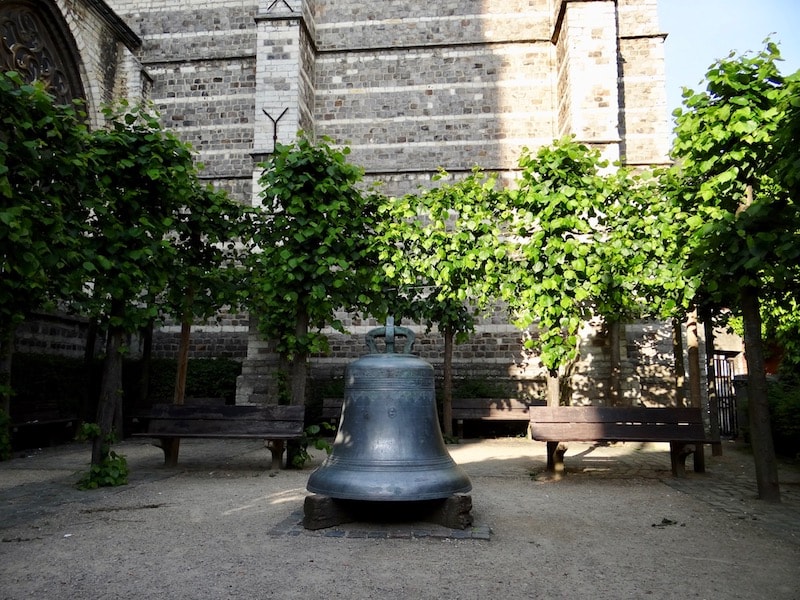
The Tien Carillon
The Apostles’ Court is dominated by 1,500 pounds of bronze. It is the cracked Witlockx bass bell from 1716, from the set of 37 bells purchased by the city of Tienen in 1723. This was now the fourth carillon. After the completion of the tower in 1592, the first prelude of 7 bells was installed. It was only short-lived because, after earlier damage from a lightning strike, the spire blew completely off the tower in 1613.
The second carillon was cast in 1640 and was given a place in the tower. This collapsed in 1708 due to a fire. The carillon was lost in the process.
In 1709, Tienen purchased a “de Haze carillon. However, this third carillon never arrived in Tienen because after its purchase, in a sort of “showroom,” it was claimed by the city of Brussels. After the carillon was suspended in the 80-meter-high belfry, it collapsed to the amusement of the Tennesseans.
In 1723, the town of Tienen purchased a carillon of 37 bells from Willem Witlockx. Thereafter, the carillon slowly expanded to its present composition of 54 bells. The carillon of Tienen was for a long time the most elaborate carillon in Belgium. Now those are Leuven and Nieuwpoort with 63 bells.
Tienen and the Dutchmen
As we walk toward the entrance to the belfry, Gilbert Declercq confides to us with a wink that Tienen and Dutchmen are not such a happy match. Of course we want to know what he meant. He then tells us about Frederick Henry of Orange who initiated the final phase of the Eighty Years’ War by making an alliance with France. In 1633, he invaded the Southern Netherlands with a 60,000-strong allied army of France and the United Provinces. On June 9, Tienen was taken, the inhabitants were beaten and women were raped. After the city was completely looted, it was set on fire.
Things also clashed between Tienen and the Dutch during the Belgian uprising in 1830. On Sept. 23 of that year, 3,000 Dutch soldiers appeared before Tienen. They did not enter Tienen, and the story goes that they had fallen prey to a ruse. Tienen possessed no cannons but brought large butter pots “into position. On the city wall, these “guns” were set up toward the enemy. In August, Tienen was taken by the Dutch during the Ten-Day Campaign, however.
We reassure Gilbert Declercq that there are only three of us this time and we will behave nicely.
In the belfry of Tienen
The entrance to the tower is located on the narrow Staircase Street. To be precise, the door sits a little more than a meter above the street with a short steep staircase in front of it. Directly behind the door, a spiral staircase spins up into one of the two original towers of the west block built in the early 13th century. In 1221, Tienen received a huge gift from Duke Henry the First for this purpose. He is remorseful that his troops destroyed Tienen on their way to Liege. He probably hoped to earn an indulgence with this by donating money for the construction of the west building of St. Germain’s church that had begun a few years earlier. (Tienen belongs to Brabant and is close to the Diocese of Liege). This west building is built in front of the Romanesque church. The style is Maas Romanesque.
One storey of these two towers was removed in 1514 for the construction of a taller central tower. In the process, the two old towers were given a gable roof. The released material was reused and supplemented with chalk limestone from an open-air quarry 12 kilometers from Tienen. This material was used because it is relatively light and easily machined. In order to build the square central tower, the west block had to be reinforced. This came at the expense of the gallery.
The church has been ravaged by fire several times in its history. And even today, a catastrophic fire still lurks. This mainly because of the way the tower was rebuilt. Lots of wood and only the second floor rests on a stone vault. All other floors are wood. Gilbert explains that to minimize the risk as much as possible for this reason, all doors and connecting doors are fitted with locks.
To the top!
After a detailed explanation at the carillon and the hour mechanism, we are left with the challenge we set ourselves: how high can we go into the peak? Gilbert warns us, “no one has been up there for a long time. It is indeed dusty and here and there is no light. Ladder after ladder we come higher and higher. The fire watch floor has a toilet despite its height. The view in all directions is beautiful but we can go even higher. Also at the height of the clock are windows to all four directions of the wind. From one window we have a beautiful view of the roof of the ship. It is Bert who eventually taps the top bar first. Mission accomplished.
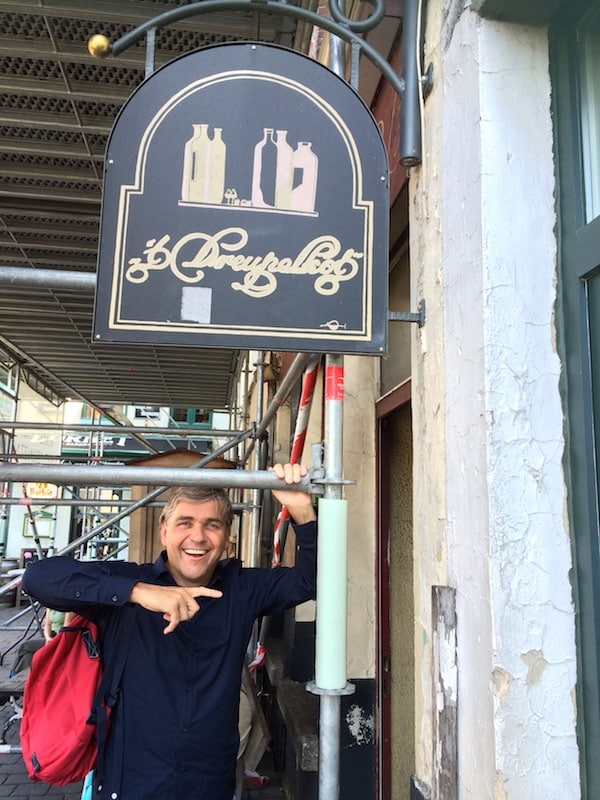
Eric Cornelissen
Wanneer het was is niet meer bekend maar tijdens een editie van de Gentse Feesten ontstond de interesse in de geschiedenis en de betekenis van Belforts. Met een vette knipoog naar Reinhold Messner die als eerste de veertien hoogste toppen van de wereld beklom moest iemand maar eens de eerste zijn die alle belforten van de Lage Landen gaat beklimmen! Pas later werd duidelijk dat het er geen 14 maar 56 zijn. Die Messner had het maar makkelijk.
